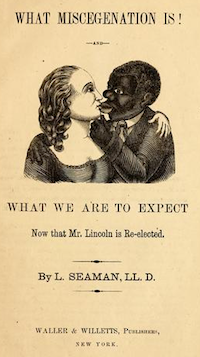DU hosted a Sesquicentennial Conversation entitled Miscegenation Law, Marriage Equality, and the West 1864-2014 on Oct. 15 in the Sturm College of Law.
Over 50 students, faculty and others gathered to listen to three panelists lecture on how Miscegenation Laws and inequality affected our region throughout history. Miscegenation Laws banned marriages or relationships between mixed raced couples.
The three panelists were Rachel Moran, Ronald J. Stephens and Anna N. Martinez. The moderator was Bill Convery, who holds the position of Colorado State Historian.
Rachel Moran is the Dean of the UCLA Law School and the Michael J. Connell Distinguished Professor of Law. She talked about how Miscegenation Laws came to be, as well as how they affected California and Colorado.
Ronald J. Stephens is a professor of African American Studies in the School of Interdisciplinary Studies at Purdue University. He focused on African American rights and how racially divided Colorado has been throughout the years.
The final speaker, Anna N. Martinez, is a Civil Litigator in Colorado and former law clerk to the Hon. Chief Justice Mary Mullarkey of the Colorado Supreme Court. She gave detailed examples of specific cases in Colorado concerning marriage inequality.
“I hope [the audience] learns about the plight of African Americans in this state, as well as the damage of unjust laws and discriminatory practices,” Stephens said before the lecture began.
Convery opened with a brief history of Colorado concerning racism and marriage restrictions.
Next to present was Moran. She described how Miscegenation Laws originated in the South when concern over mixed race slave children became an issue. The popular opinion was that “mixed race children were black,” and therefore could not be considered free or have rights.
She then went on to talk about California’s Miscegenation Laws, which targeted Asian immigrants. In California, the laws were designed to force Chinese, Japanese and Filipino immigrants to return to their native country.
Moran then discussed how the Colorado territory had Miscegenation Laws as well, but only after additional land was acquired from Mexico. Because the people living in the territory had different customs and laws, there was an invisible boundary where mixed race couples were more accepted. She concluded by explaining how it was not until the 1960s that the Supreme Court decided Miscegenation Laws were unfair.
Stephens talked about African Americans and their fight for full citizenship; he brought up Barney Ford, an escaped slave who arrived in Colorado in the Pike’s Peak gold rush of 1858-1861. Ford became a businessman who was interested in politics and rights for African Americans.
Stephen went on to discuss how Colorado stayed a territory because of the disunity over the existence of Miscegenation Laws, even though there were many African Americans in Denver and Colorado Springs.
When the Homestead Law stated that people could have free land if it was farmed on for five years, African Americans saw it as an opportunity for freedom.
Yet Colorado remained racially divided. Stephens mentioned that white people in Colorado rated sex between a black man and white women as the greatest offense that could be committed. He concluded with Ford, and how his crusade for African American freedom helped create the freedom experienced today.
Martinez concluded the talk with more specific examples of racial inequality in Colorado. She focused on Lydia Brethauer, a white woman, and James Jackson, a black man. They were a married couple charged for vagrancy, but because Colorado was so against interracial marriages, the charges were an opening to get a judge to find the marriage against anti-miscegenation statute. This way, more couples could be deemed “illegal” in their relationships and fined.
Martinez discussed the 1864 Territorial Law, which stated that interracial marriages were void, unless the couple was in the portion of the state acquired from New Mexico.
“I encourage my students to go to help them participate in one of the best things about being on a brick and mortar campus – the DU academic community and the sharing of ideas and research on all levels,” said Dr. Jodie Krieder, a lecturer in the history department.











